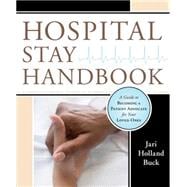
| Foreword | |
| A Doctor's Perspective on Advocacy: A View from Above the Bed | p. xi |
| A Patient's Perspective on Advocacy: A View from the Bed | p. xiii |
| An Advocate's Perspective on Advocacy: A View from the Bedside | p. xvii |
| Read Me First, Read Me Often: How to Use This Book | p. xxv |
| Our Story: One Day, After Lunch | p. 1 |
| 14 Key Recommendations | |
| Take Care of Yourself | p. 17 |
| Taking Care of Me | p. 26 |
| Choose Your Hospital with Awareness | p. 29 |
| Gathering Information From/About Your Doctor | p. 40 |
| Gathering Information About Your Hospital | p. 41 |
| Hospital Evaluation | p. 43 |
| Pick the Days of Your Stay Carefully | p. 47 |
| Take Legal Steps to Ensure the Patient's Wishes Are Honored | p. 53 |
| Preparing Legal Documents | p. 60 |
| Read and Use the Patient Advocacy Statement | p. 61 |
| Assume Your Loved One Can Hear Everything, so Speak in the Positive | p. 73 |
| Educate Yourself | p. 77 |
| Ask About Every Medication, Injection, and IV Solution | p. 81 |
| Understand Every Procedure Used or Denied in Treatment | p. 89 |
| Procedure Preparation | p. 97 |
| Keep Track of All Supplies and Services, Warranted and Unwarranted | p. 99 |
| Arrange for 24/7 Coverage | p. 101 |
| Care Team Notebook | p. 105 |
| Pray | p. 115 |
| Surrender | p. 119 |
| Take Care of Yourself | p. 123 |
| For a Deeper Understanding | |
| Lessons in Advocacy | p. 131 |
| Lessons in Caregiving | p. 157 |
| Lessons in Money Matters | p. 165 |
| Afterword: Life and Spirit: The Next Six Years | p. 173 |
| Acknowledgments | p. 183 |
| Patient Forms | p. 187 |
| Sample Durable Medical Power of Attorney Form | p. 188 |
| Sample Living Will Form | p. 189 |
| Sample Out-Of-Hospital "Do Not Resuscitate" Order | p. 190 |
| Instructions for First Responders/EMS | p. 191 |
| Sample Anatomical Gifts Form | p. 192 |
| Sample Power of Attorney Form | p. 193 |
| Sample HIPAA Waiver | p. 194 |
| Hospital Forms | p. 195 |
| Sample Patient Advocacy Statement | p. 196 |
| Sample Medical Information and Privacy Statement | p. 200 |
| Resources | p. 211 |
| Index | p. 229 |
| Table of Contents provided by Ingram. All Rights Reserved. |
The New copy of this book will include any supplemental materials advertised. Please check the title of the book to determine if it should include any access cards, study guides, lab manuals, CDs, etc.
The Used, Rental and eBook copies of this book are not guaranteed to include any supplemental materials. Typically, only the book itself is included. This is true even if the title states it includes any access cards, study guides, lab manuals, CDs, etc.